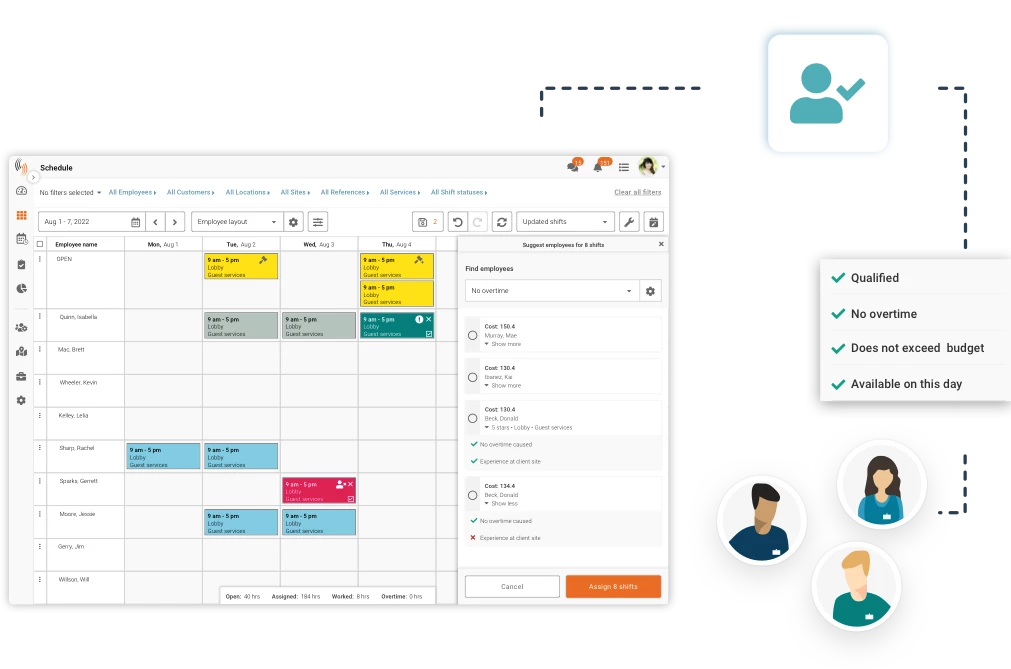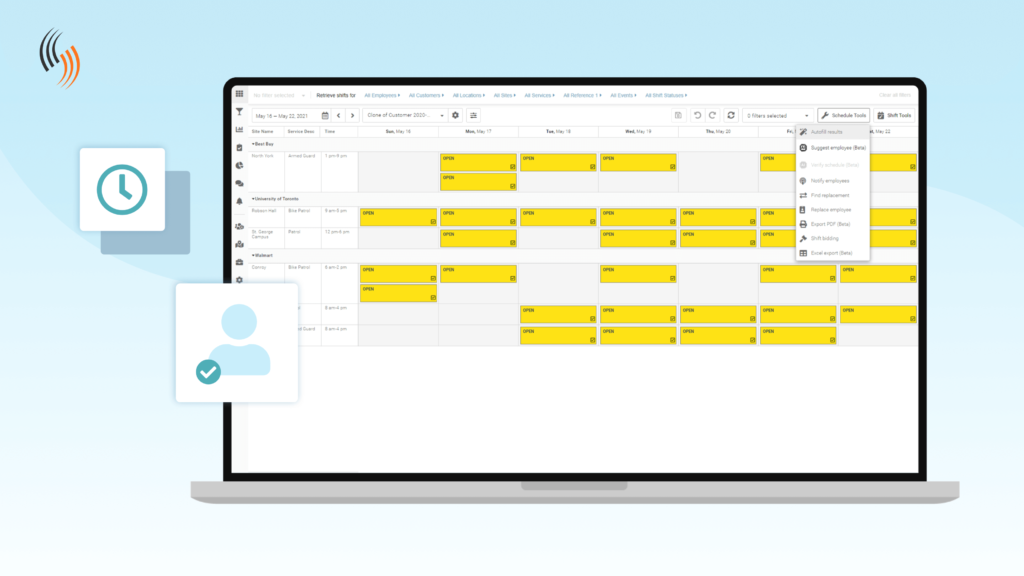Most schedulers have to juggle both full time, and part time schedules when creating employee schedules. While this might sound easy, it can lead to schedule errors, or sending employees into overtime unintentionally! This costs you both time and money. Today, we want to help you improve your employee scheduling process when it comes to full time vs. part time schedules. We also look at how employee scheduling software can help.
Understanding the Differences Between Full Time and Part Time Work

Let’s begin by delineating the differences between full time and part time work. Full-time employment is typically defined as working at least 40 hours per week. Full-time employees often receive benefits such as health insurance, paid time off, retirement contributions, and other perks. They have a stable, predictable work schedule, allowing them to reliably plan their personal life around their work commitments.
Part-time employment, on the other hand, usually refers to a work schedule of less than 30-35 hours per week. Part-time employees may or may not receive the full range of benefits that full-time employees do. Their schedules can be more flexible and varied. This makes part-time work an excellent choice for students, people with family commitments, or those pursuing side projects.
Some other important differences!
Full time and part time employees are often paid in different ways. Generally, full time workers earn a salary. This means they get the same pay every pay period. On the flip side, most part time workers get paid on an hourly basis! This means when it comes to part time schedule management, attendance matching is crucial for accurate payroll.
When it comes to job stability, the perception often held by workers is that full-time employment is more stable than part-time work. This belief stems from common misunderstandings that part-time workers earn less, lack benefits, possess fewer skills, and are more readily replaceable. However, these assumptions are not always accurate. In reality, job security is not inherently tied to whether a position is full or part-time. Any employee, regardless of their working hours, can face termination.
All of these differences are important to keep in mind when hiring full time vs. part time employees. But now, let’s look at how to schedule both!
Crafting a Schedule That Caters to Both

Crafting a work schedule that accommodates both full time and part time employees is not a one-size-fits-all process. It requires balancing the needs of your business with the availability and preferences of your employees.
Firstly, identify your peak times and ensure you have enough staff to handle the workload. Full-time employees are likely to form the backbone of your staff during these periods.
For off-peak hours, or for roles that require less commitment, part-time employees can be a great fit. They provide flexibility to your workforce and help ensure you’re not overstaffed during quieter periods.
Ensure transparency in your scheduling process. Communicate the schedule well in advance to give employees time to plan their personal commitments. Also, encourage feedback from your employees. Their insights could help optimize the schedule in a way that benefits everyone.
Leveraging Employee Scheduling Software
In the digital age, employee scheduling doesn’t have to be a daunting task. Employee scheduling software can streamline the process, improve accuracy, and save time.
A good scheduling software will allow you to quickly generate and modify schedules. It should also facilitate communication, allowing for real-time updates and employee feedback. The ability to track employee time and attendance is another vital feature, as it aids in payroll processing and monitoring compliance with labor laws.
Celayix has a number of features that can help with creating full time and part time schedules… let’s look at our rules based engine for scheduling!
The Celayix Rules-Based Engine: Your Scheduling Partner

Do you ever wish that you could just create a schedule without having to worry about all of the different stipulations around your employees? Maximum and minimum hours, overtime, seniority – the list goes on.
The Celayix Rules-Based Engine does exactly that. Once the scheduler has input their own business rules, the system will alert them any time a rule is broken during schedule creation. It can monitor the working hours of each employee, ensuring they don’t exceed limits set by law or their contracts. It can also alert the scheduler any time overtime is scheduled for an employee, giving the scheduler an opportunity to replace them. This feature is invaluable for businesses with a mix of full time and part time employees.
The software allows you to set rules for various aspects of scheduling, such as maximum hours per shift or minimum rest periods between shifts. It then automatically flags any potential scheduling conflicts, such as an employee being scheduled for too many hours or not given enough rest time.
Moreover, the Celayix Rules-Based Engine can also account for employee skills, certifications, and preferences, ensuring the right people are scheduled for the right tasks.
By utilizing the Celayix Rules-Based Engine, you can avoid many common scheduling pitfalls. It can help create a more harmonious workplace, where both full-time and part-time employees have schedules that meet their needs and your business requirements.
Are you ready to create combined full time and part time schedules?
Understanding the differences between full time and part time work is essential for any business owner or employee scheduler. Crafted wisely, a work schedule that caters to both types of employees can significantly benefit your organization, fostering a more satisfied and productive workforce.
Investing in advanced scheduling software like the Celayix Rules-Based Engine can streamline your scheduling process, ensure compliance with labor laws, and contribute to a healthier, more balanced work environment. It takes into account the unique needs of your employees and the specific requirements of your business, helping to create schedules that are optimal for everyone involved.

Remember, a well-structured work schedule is more than just a logistical necessity. It plays a significant role in the work-life balance of your employees, influencing job satisfaction, productivity, and employee retention. As such, it’s worth investing the time and resources to get it right.
So, the key to creating an effective work schedule lies in understanding the differences between full-time and part-time work. You have to foster open communication with your employees, and leverage technology to streamline and optimize the process. Embrace the tools at your disposal and take one step closer to creating a more balanced, productive, and harmonious workplace.
With these tips in mind, you are well on your way to creating work schedules that cater to the diverse needs of your full-time and part-time employees, ultimately driving your business towards success. If you’d like to learn more about Celayix employee scheduling software, or our rules based engine, get in touch for a free, custom live demo!





